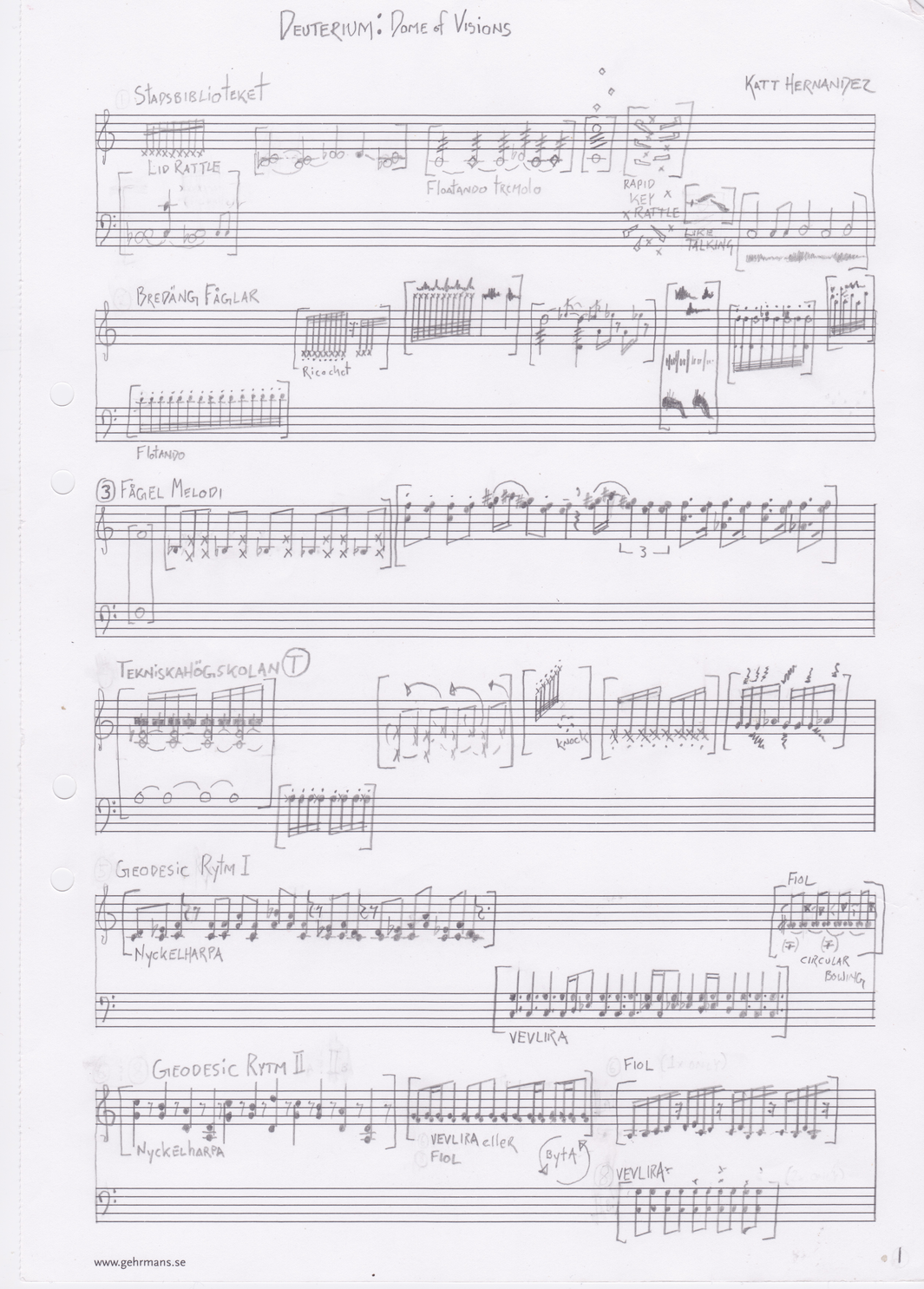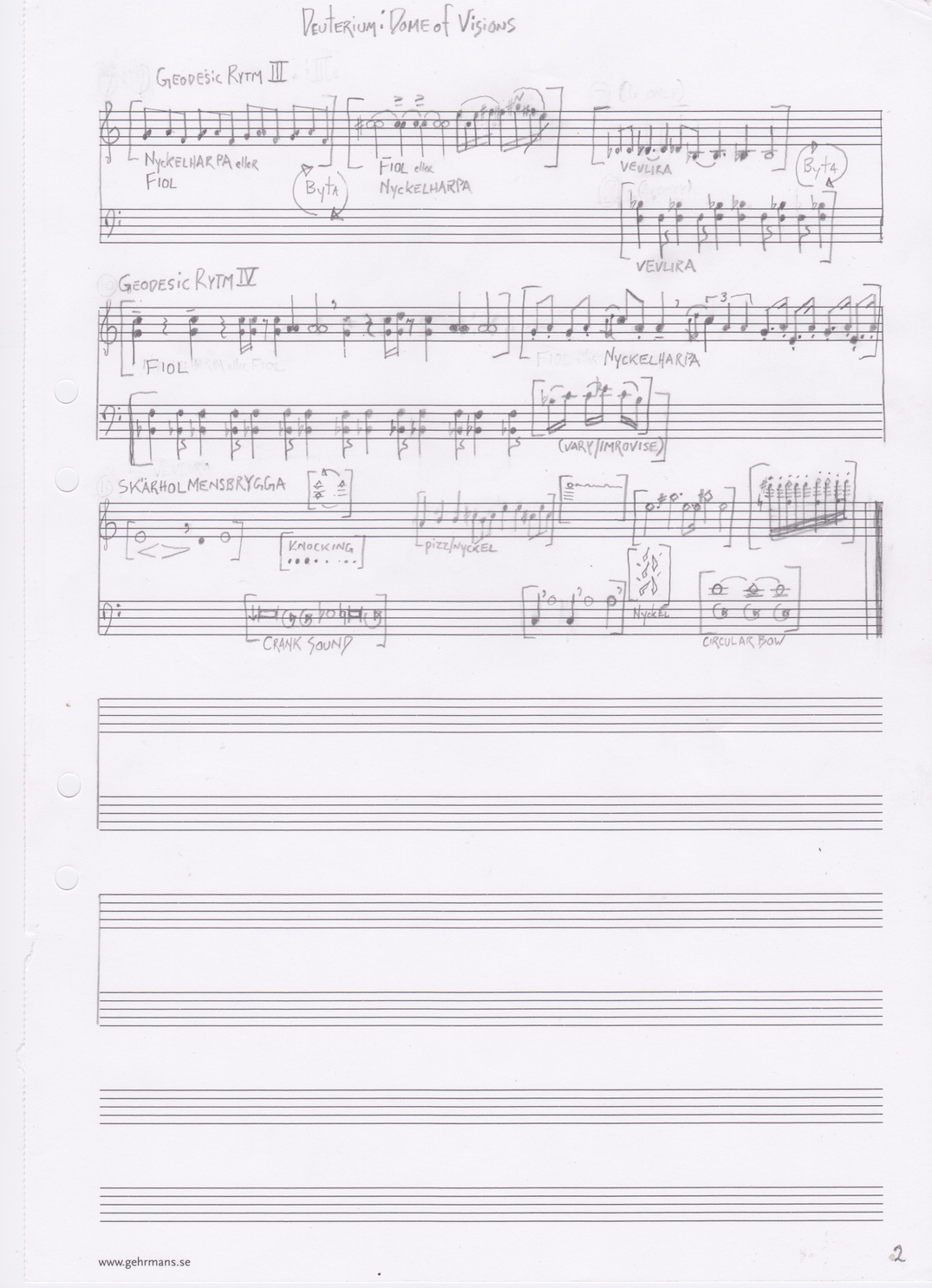Deuterium: Dome of Visions. Video excerpt of concert, Dome of Visions, Stockholm. May 29th, 2017. Video: Thomas Skoog, 2017. All rights reserved. Used with permission.
The Dome of Visions dominated the Valhallavägen face of KTH from September of 2015 to October of 2017.x A great Plexiglass dome based on the ”dymaxion” architecture of R. Buckminster Fuller, it stood in a city with a history of ”Bucky” domes. Those previous two domes were designed and built by the artist and architect Bengt Carling, and both were located in the garden of the Moderna Museet, in 1971 and 2011, respectively, which you can read more about here.
The concert was comprised of three pieces: a graphic score from Bruno Andersen,Deuterium: Dome of Visions, and a solo improvisation I played more in the style of the SO(U)LEN(SKIN(NER) material, drawn from the same bird recordings we transposed as a group. Unfortunately neither the video camera I borrowed, nor part of the recording apparatus we had, worked properly due to malfunction and electrical problems, but there is this video documentation of a portion of the piece taken by an audience member,x and a good room recording of the entire concert from our rehearsals, as well as photographs. The Dome was very hot that day (geodesic domes can sometimes be flawed in temperature regulation), but there were roughly 40 people in attendance from the KMH and KTH communities.
Deuterium: Dome of Visions is focused on two types of material: field recording transposition, and rhythms abstracted from folk tunes Lisa gave me, combined with abstracted material from the structure of the Dome.
This was the first time I involved others in the practice of transposing field recordings I sometimes employ in my work. The other musicians made very interesting and imaginative materials from the recordings we used: Tekniska Högskolan subway station, from when it still had metal turn-styles; magpies, jackdaws, björktrast and crows in Bredäng; Sailboats, water and seagulls at Skärholmens brygga, in Sätra, and; a combination of sounds taken from the central hall of the central library and from Järnvägsrestaurang, both large, round rooms with special acoustic qualities, indicative of unique Stockholm architecture from the time in eth were built in the earlier 20th century. These became four sections in the score, as if we were traversing these places by playing them.
Our method was simple, and was exactly what I had been doing with field recordings on my own. We listened to a recording once or twice, and then played along several times more, mimicking different features. I recorded this rehearsal, and then transcribed the materials as modules, to be used as reference for improvisation in different sections. There is an example of this work at Map Point: Skärholmens brygga.
The second method of composition in the piece was to write rhythmic material based on folk music Lisa Gerholm gave me to include, two gånglåtar (“walking songs”) which I combined with algorithmic work drawn from the geodesic architecture of the dome. I used measurements of the three sorts of triangles that would usually go into building a dome of that size to generate various phasing rhythms that were to be played in cycles, basing the more melodic aspects of the patterns on the music Gerholm had given me. It seemed important include material from that aspect of the two folkloric instruments, and the gånglåt, was a kind of secret commentary on the idea of the person who wanders in dérive as well.







